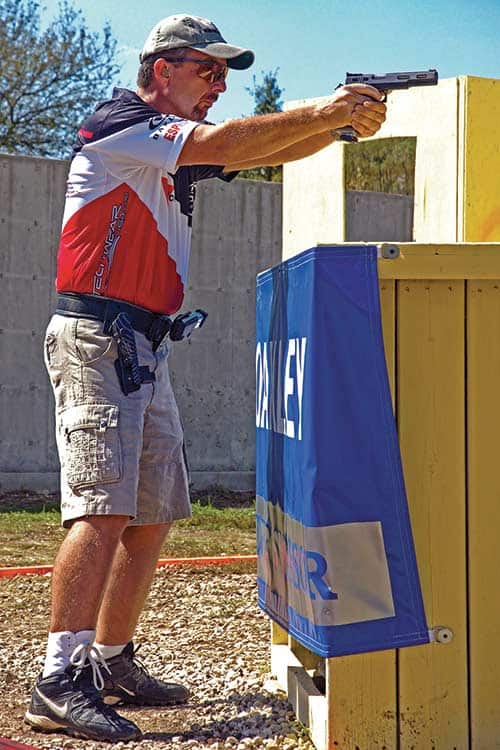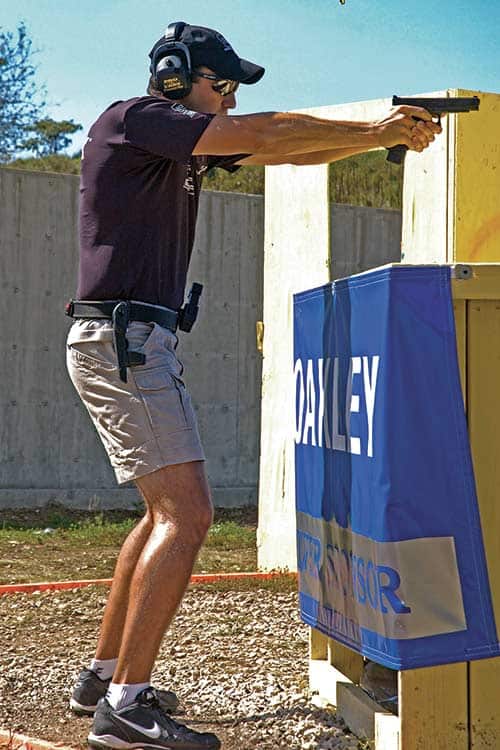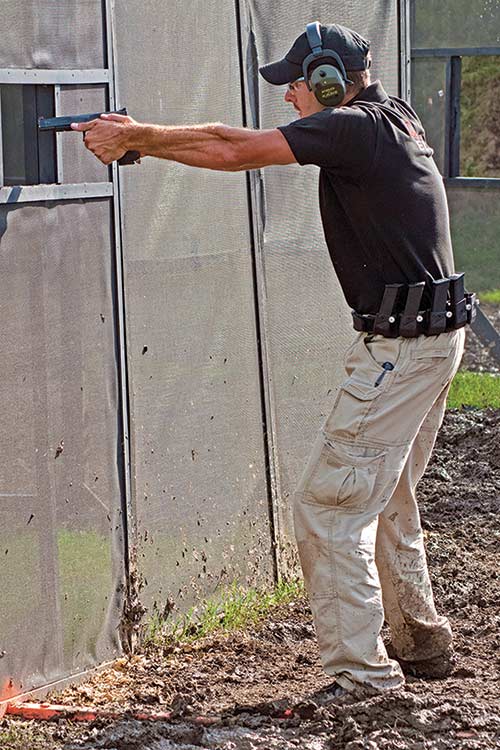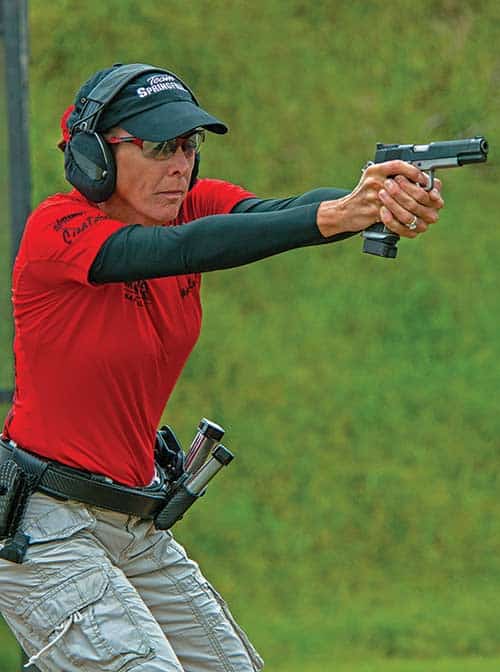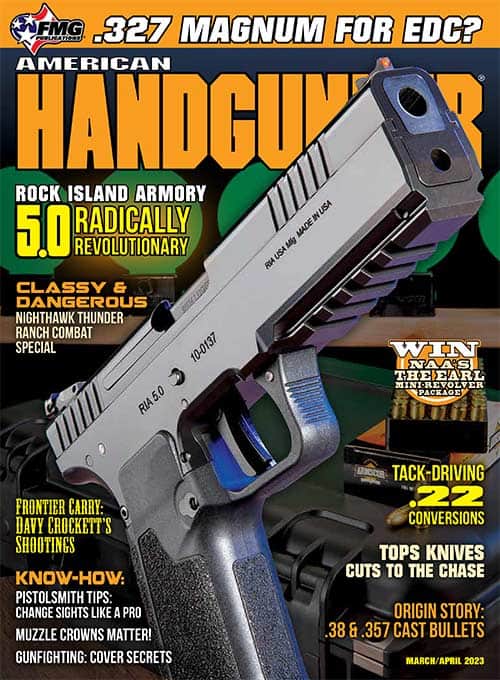Better Shooting What a Difference a Stance Makes
Shooting stance is a topic I try not to get too dogmatic about. There is plenty of time to settle in a solid stance in formal bullseye shooting. In a defensive, hunting or competitive practical shooting scenario, you need to be versatile enough to go with what works.
This isn’t to suggest stance is not important — a stable shooting position makes fast and accurate shooting easier. For the novice shooter, the time and effort spent developing a strong and stable stance will significantly enhance the learning process. It will make you a better shooter in less time.
Before starting to change things, you should be aware of what you are already doing. Maybe your shooting stance is already working for you, and any change would make things worse. I’m always leery of instructors who start offering advice and making changes to your shooting techniques before even observing you shoot. Make changes a little at a time, testing constantly. I remember legendary golf pro Harvey Penick writing, “If I suggest an aspirin, it doesn’t mean take the whole bottle.”

Kay Clark Miculek, daughter of the legendary bullseye champion and gunmaker
Jim Clark and wife of Jerry Miculek. Kay is a champion with more titles than she
can recall. Although strong and fit, she doesn’t have the size and upper body
strength of top men shooters and uses a more aggressive, forward-leaning stance
to maintain stability while shooting.
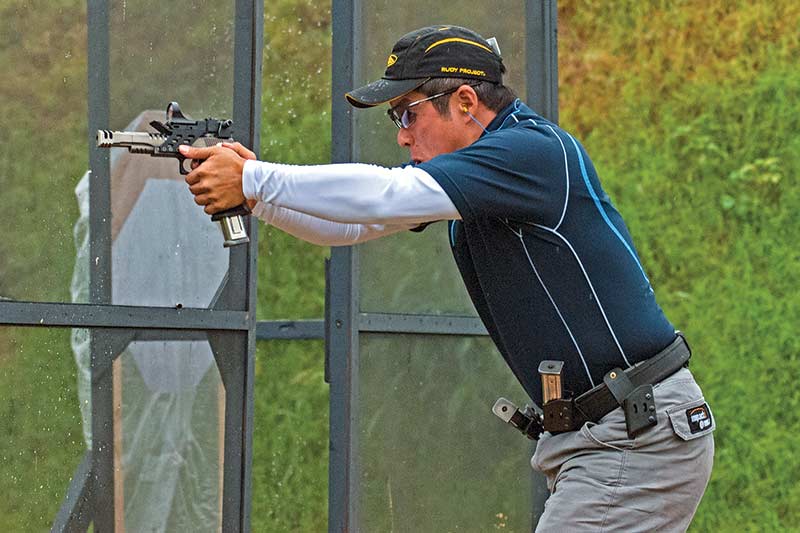
I’m grateful to have followed the competition scene when Jethro “Jet” Dionisio was
competing. His speed, focus and intensity were mesmerizing to watch. He uses an
aggressive stance to make up for his relatively small size compared to many of the
other champions of his era — and beat most of them most of the time.
How the Pros do it
I’ve included some vintage photos of shooters who were not only champions but were competitive for a long time. The feet are about shoulder width apart, maybe a bit more, legs slightly flexed. The stance is balanced, alert and stable yet mobile to move instantly as needed. The stance is strong but not rigid — “springy” rather than locked, with body weight forward rather than back on the heels. My friend J. Michael Plaxco used the phrase progressively aggressive: “shoulders ahead of hips, ears ahead of shoulders.”
Test your stance by firing several shots rather than one or two. Set up a target you can easily hit, even if only three yards away. Fire at least six shots as fast as you can and repeat several times. Novice shooters are often pushed back on their heels by the cumulative recoil. Try adjusting weight distribution forward a bit, make the stance a bit more aggressive and continue shooting strings until you can shoot any number of shots and remain stable.
Upper body, arm, wrist and hand strength help. Remember, the hold must be firm but not locked, or speed will suffer. Arms and hands manage muzzle jump to return the sights on target after each shot; body mass and body position maintain stability during recoil. At major matches, I’ve often seen women shooters weighing maybe 125 lbs. shooting faster and with better recoil control than men with much greater strength.


